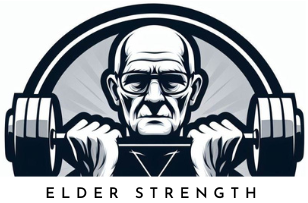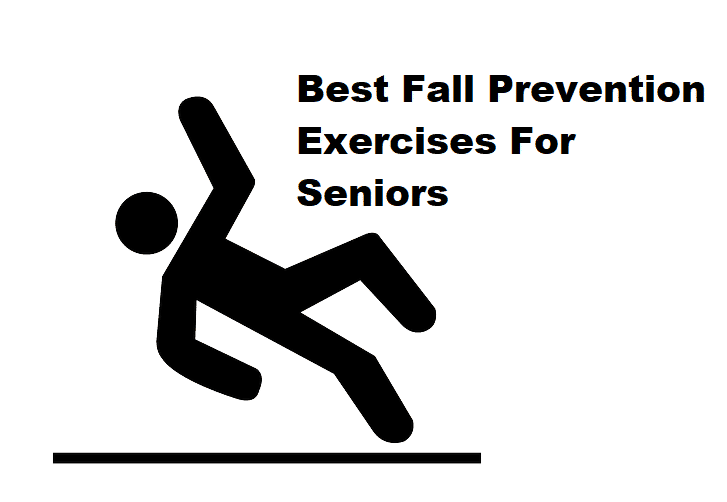Welcome friend! In this post, you will learn about fall prevention exercises for seniors that you can do at home or at the gym to reduce the risk of falling.
Fall prevention is something most people don’t really actively think about most of their life. There are bigger problems to think about in the day to day normally after all.
While the risk of falling is pretty small for adults, the consequences can be devastating when it does happen. And unfortunately, it always happens unexpectedly.
To make things worse the risk of falling is much higher for seniors and so are the potential consequences.
As you age there are several factors that increase the risk of falling. Ranging from age-related physical decline to medications and medical conditions.
While it’s impossible to completely prevent falls there is a lot you can do to reduce to reduce the risk of falls.
Before we look at exercises for fall prevention, it’s important to understand why seniors have a higher risk and what factors affect your risk of falling.
Why Seniors Have Higher Risk Of Falling
Seniors have a higher risk of falling than younger adults for several reasons.
The biggest reason for increased risk comes from a decline in physical capability. Generally speaking your strength levels, reaction time and flexibility reduces as you age.
While it’s possible to keep very fit, strong, and limber as a senior through exercise, the effects on your reflexes are inevitable. There is significant individual variation but everyone becomes a bit slower as they age.
For most seniors, physical decline is a more significant factor than reduced reflexes. Weak legs combined with bad flexibility and being overweight make maintaining balance much harder.
Many medical conditions can affect your balance detrimentally. Any disease that affects the central nervous system, for example, Alzheimer’s, multiple sclerosis, or Parkinson’s disease can make keeping balance a lot harder.
Many seniors also suffer from vertigo and a reduced sense of balance and proprioception simply due to aging. Our balance organs tend to deteriorate with age, unfortunately.
Blood pressure issues, especially low blood pressure can cause dizziness. Also, heart conditions and other cardiovascular diseases can affect your balance through several mechanisms. This includes diabetes.
Finally, many medications can affect your balance. Especially anything that affects the central nervous system or your muscles like sleeping pills, antidepressants,
Seniors also have a risk of worse injuries from falls. This is for two reasons. Firstly you tend to lose bones mass as you age, which can cause osteoporosis which significantly increases the risk of severe fractures.
The second reason is that if you do suffer a fracture or any other kind of injury, it takes significantly longer to heal from them. In worst-case scenarios, bad fractures will not heal in seniors.
Basics Of Fall Prevention
Before we look at the exercises, let’s look at what things affect your ability to maintain balance when you are about to fall.
A fall typically happens when you slip or stumble so that your balance becomes compromised.
The most important thing for fall prevention is to avoid this at any cost. Good non-slip footwear, high friction socks, and suitable flooring for your home are a good start.
You can also fall-proof your house with different types of railings and functional solutions on the market.
If you live in a cold climate, during the winter you have to be especially careful when the ground is icy. Ice shoes or add-on ice grippers with trekking poles are a good way to improve your chances if you have to face the weather.
But fall-proofing aside, let’s talk about what you can do to improve your chances of maintaining balance if the worst happens.
Your reflexes dictate how fast you can start to react to the situation but your leg strength and flexibility dictate the time you have to regain balance before the tipping point, so to speak.
The faster, stronger, and more flexible you are, the higher your likelihood of regaining balance and preventing a fall.
But the key factor that makes these physical attributes function together is your balance skill. That’s right, balance is a skill.
You learned it as a child and probably haven’t thought much about it since, but it takes an immense amount of work from your body to maintain balance during movement.
Unfortunately, this skill can deteriorate if it’s not used enough. Walking will maintain your balance during walking. But if you want to maintain balance when you’re about to fall, you need to have high enough skill for that.
So to prevent falls there are three physical components you need to train to reduce the risk of falling.
Your flexibility (and mobility), your balance skill, and your strength (especially in the legs).
Best Fall Prevention Exercises For Seniors
Exercise 1: Hip And Leg Mobility
DISCLAIMER: Before we look at the exercises it’s important to know that they are no substitute for medical advice. If you have any hesitation about your physical ability to perform these exercises or you have any medical conditions, it’s important to discuss balance training with a medical practitioner.
Hip and leg flexibility and mobility is very important for fall prevention for several reasons so let’s start with it.
First of all stiff and shortened muscles are weak and get injured very easily. Especially during sudden movements like what happens during a slip and struggling for balance.
More importantly, having good flexibility in your hips and legs will make balance training and strength training more effective, as you use a longer range of motion.
To improve hip and leg mobility you should stretch the quads, hamstrings, adductors, and glutes at least a few times a week.
A full stretching routine is too long to write out in this article, so you can read more about these stretches in the article Simple Hip Stretches For Seniors.
Stretching improves flexibility, the passive range of motion of your joints. Strength training with a full range of motion improves mobility and the active range of motion of your joints.
Flexibility always proceeds mobility, so stretching is an important exercise for improving range of motion and injury prevention.
Exercise 2: Balance Training
The next thing after improving your hip and leg mobility with a stretching routine is to improve your balance skill.
Your balance skill is a very complex skill that you have honed your whole life. It’s important to understand that balance is specific to movement so the more complex and varied activities you do, the better your balance will be.
Even if you know how to rollerskate or bike, it doesn’t mean you know how to skate with a skateboard. I know this is a pretty extreme example that doesn’t concern most seniors but it shows the point of specificity.
If you can stand up and walk comfortably, it doesn’t mean your balance skill is good enough for optimal fall prevention. It needs to be challenged from time to time.
With balance, training safety is especially important for seniors. It’s possible to fall and injure yourself, so always start very easy, do them with a partner and in a safe environment, and if you have any hesitations about your abilities consult a professional.
For basic balance training, simple bodyweight challenges like one-leg stands and single leg lifts are great. You can find ideas for these types of exercises in the post Standing Balance Exercises For Seniors.
The next level for balance training is using a balance board. Balance boards are great and affordable tools for seniors to improve balance. You can learn more about them in the article Best Balance Boards For Seniors.
A very important form of balance training is doing variable activities that require balance. Cycling, kayaking, hiking in nature, and golf are all great examples of activities that challenge your balance and many seniors can enjoy.
Yoga, Tai-Chi, and martial arts like Tae Kwon Do are also excellent for your balance.
Exercise 3: Leg Strength
The final piece of the puzzle for balance exercises is improving leg strength with strength training. While this is the last on the list, it doesn’t mean it’s any less important, on the contrary.
I’ve talked about the importance of leg and core strength for your ability to maintain balance in the articles Benefits Of Strength Training For Seniors and How To Improve Balance In The Elderly.
Many people lose a lot of strength with age, it’s a completely normal result of aging. But what you might not know is that you can reduce the effect extremely effectively with strength training.
You don’t have to be or become a powerlifter or a bodybuilder to have strong enough leg strength for good balance.
More important is to have adequate strength with a full range of motion as you can. People have differences in leg and hip mobility and it’s quite possible that you have developed joint pain and issues as you’ve become older.
Strength training has been proven to be effective for improving leg strength and stability for seniors so it’s definitely you should include in your fall prevention exercise routine.
Bodyweight squats are probably the most effective strength training exercise for overall leg strength you can do at home. You can learn more about improving leg strength for seniors in the article Weak Legs On Seniors.
At the gym, you have much more options. Leg press, leg extension, and leg curl machines are all great for improving leg strength. Just remember to have balance in your training, do similar amounts of all of them.
Both at home and at the gym it’s very important to start light and focus on the range of motion and proper muscle activation first. Increasing repetitions and weight comes only after you can comfortably perform the exercise with the full range of motion.
You can check the linked aforementioned articles for strength training routine ideas but I always recommend you consult an experienced trainer with experience training seniors if you are new to strength training.
Conclusion
I hope you found this post about fall prevention exercises for seniors useful. If you have any comments, ideas or questions, feel free to leave them below and I will do my best to help you out.
As a recap, fall prevention is very important for seniors because the risk of falls increases with age as does the risk of severe consequences.
The most important factors that you can affect are taking good care of your general health, doing diverse activities that challenge your balance skills, and maintaining good physical strength and fitness as you age.
You can also improve the safety of your home and the places you spend most of your time in with fall prevention measures as I talked about in the article How To Prevent Falls In The Elderly.
Keeping your body flexible through mobility exercises, doing balance exercises and strength training are all great ways to improve your chances of maintaining your balance if the worse happens.
Thanks for reading and see you next time!

